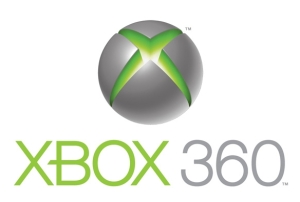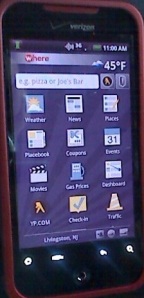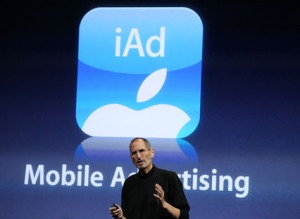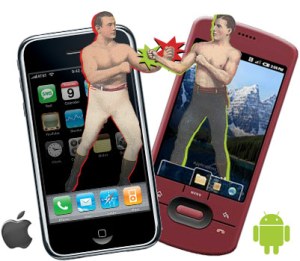It is not often that someone shows me something in tech that makes me go “WOW!, that’s cool”. I had such a moment recently when I met Jonathan Bulkeley, CEO of ScanBuy. Regular readers of this blog know that I rarely promote products and services, but rather just give my “guy on the street” views.
Unless you are George Bush Senior, you know that there are barcodes on everything. There are the ubiquitous 1-D UPC codes that you see in the supermarket and a host of new 2-D barcodes. With the inclusion of barcode readers in smartphones (my Android is very capable in this area) you can go to a store, scan the barcode and be linked to product information websites, Google shopper, Amazon, etc. You can do instant online price comparison in a store, and if you like purchase the product. It seems that stores are catching on and are starting to put there own barcodes on products that then links back to their own website, not a competitor’s. This is not the “WOW” part. I’ve been doing store scanning for some time. Its fun and seems to thoroughly annoy sales staff (and sometimes my wife!)
The company that Bulkeley runs is the one that produces the Android app that I use to scan barcodes. You can think of a barcode as a web url that directs the application to go to some specific website or activate an application. You can imagine that the directory service of linking codes to a website is an interesting business area.
Now for the “WOW” moment.
When I was talking to Bulkeley, he showed me his business card that had a 2-D barcode on the back. He said, “go ahead scan it”. When I scanned it, the application opened up the contact manager on my phone and auto-populated all of his details and asked me to confirm. That was WOW.
You see ScanBuy and its consumer facing ScanLife website gives you the opportunity to have your own personal 2-D barcodes that link to a website or launch a contact application. There are codes you can make for websites, phone numbers, SMS, Twitter, and even a menu of items.
Here is my contact 2-D Barcode:

And here is another that links to my personal Website:

And yet another that I made to link to my favorite Youtube video. I bet you can’t guess which one?

You can even change the destination website of any barcode on the ScanLife website. If you have a smartphone with a ScanLife application, you can scan these codes directly from your computer screen.
He told me his daughter has a barcode on her dorm door and changes the website with her mood and likes.
I could envision a whole new market in fraternities, sororities and dorms. No need to put a piece of clothing on the door knob as the signal of an “overnight” guest. Just make sure your roommate scans before he enters!
But as they say – Wait –there’s more to this story….
 A day later I was taking the train back to New Jersey from New York. The train was full and I was sitting alone in two facing seats. Three others came to occupy the other spots. There were two young women – maybe 22 – one with bright purple hair and lots of interesting body art and the other very blonde and pixie-like. Their androgynous boyfriend rounded out the group. Needless to say, I did not have much in common or much to say as the went on about their art exhibits and music performances. This was not the “Hey! how about those Yankees?” crowd. And I was not up on the latest exhibit in the Village.
A day later I was taking the train back to New Jersey from New York. The train was full and I was sitting alone in two facing seats. Three others came to occupy the other spots. There were two young women – maybe 22 – one with bright purple hair and lots of interesting body art and the other very blonde and pixie-like. Their androgynous boyfriend rounded out the group. Needless to say, I did not have much in common or much to say as the went on about their art exhibits and music performances. This was not the “Hey! how about those Yankees?” crowd. And I was not up on the latest exhibit in the Village.
This all changed when Miss Pixie took out her Android phone. Ah!, now something of a connection. We had a long discussion on apps and her favorites. Her two interesting friends also had Androids, but older models (at least 6 months) and seemed behind the curve. Pixie liked the same apps I did. I am not sure what to conclude from that, so moving on…..
She had Twitter, Facebook, Foursquare, Skype and Google Navigation. Her really favorite “cool” app was, you guessed it – ScanLife. She did not even know the name of the company, just that she could use it when she shopped.
At this point her rather purple, pierced and tattooed friend perked up and said , “I always wanted to get a barcode tatoo.”
Not wanting to waste a good promotion opportunity for Mr. Bulkeley’s company, I explained how she could have her own personal barcode that linked to something that she could pick, and even change. She was delighted and copied down the info.
For this group of avant-garde artists, it was one more cool thing to adorn their body with , and something they could scan with their phones.
The train pulled into my stop and my new friends, who were brought together by our Droids and barcodes, parted ways.
 Facebook brand timeline and advertising strategy has created life for brands, and likely even more fortunes for Facebook.
Facebook brand timeline and advertising strategy has created life for brands, and likely even more fortunes for Facebook.  While there is still a place for the smaller “Mom and Pop” establishments in the Facebook Universe, the Facebook Ad engine is clearly aimed at global brands with significant budgets. Facebook is, without a doubt, aiming for to be the primary digital ad platform of choice for brands in the future.
While there is still a place for the smaller “Mom and Pop” establishments in the Facebook Universe, the Facebook Ad engine is clearly aimed at global brands with significant budgets. Facebook is, without a doubt, aiming for to be the primary digital ad platform of choice for brands in the future.




























